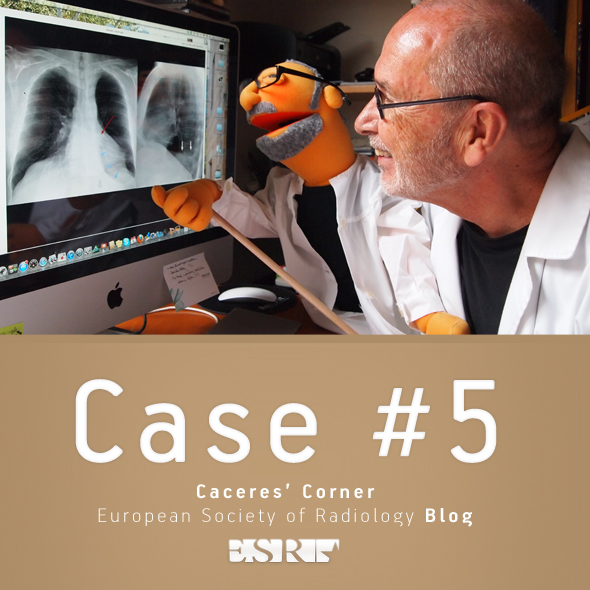
Dear friends,
Welcome to case #5.
Case #5 is also from my wife. It is a 27-year-old female with a chronic infiltrate in the right upper lobe. My Wife asked us (ordered, according to Muppet) to help her with the case, because she doesn’t know what it is.
Diagnosis:
1. Tuberculosis
2. Aspiration pneumonia
3. Bronchioalveolar carcinoma
4. Lymphoma
I didn’t make the diagnosis, but the Muppet did! What is the Muppet’s diagnosis?
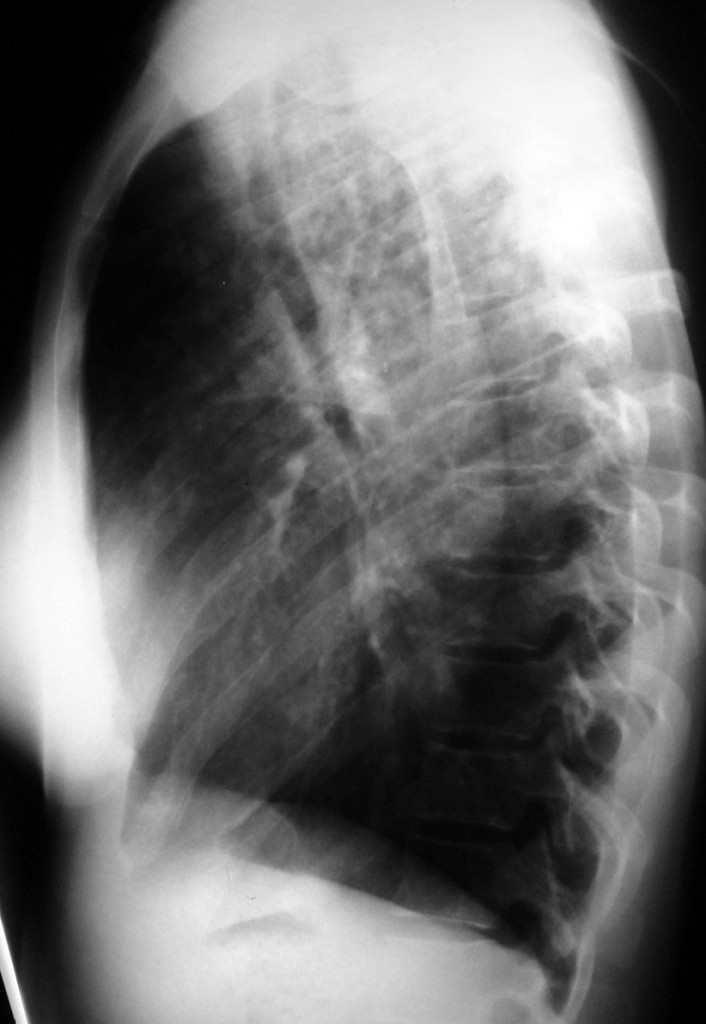
Lateral chest
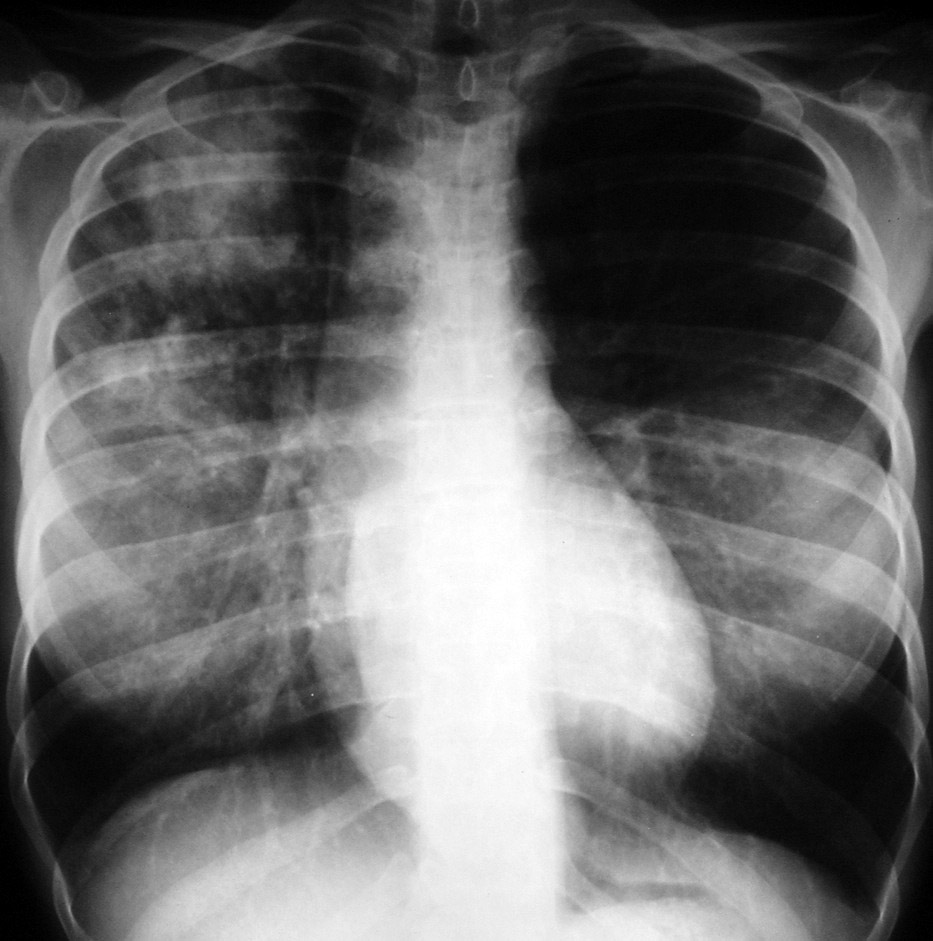
PA chest
N.B. The quality of the films is not excellent, but they give enough information to allow diagnosis. Disregard the increased opacity in both middle lung fields; this is due to overlapping breast prosthesis.
Click here for the answer to case #5
The PA chest radiograph shows an infiltrate in the right upper lobe (
red arrow). There is a right paramediastinal line that extends from top to bottom (
blue arrows). The lateral view shows anterior displacement of the trachea by a tubular structure (
blue arrows), which also extends from top to bottom.
A structure in the middle mediastinum that goes from top to bottom suggests a dilated oesophagus. The anterior displacement of the trachea also supports this possibility. A barium swallow confirms the dilatation of the oesophagus, secondary to narrowing at the oesophagogastric junction (arrow). Best possibilities are carcinoma vs. achalasia. Considering the age of the patient, achalasia with aspiration pneumonia is the most likely diagnosis.
Muppet offers additional information: in achalasia, oesophageal contents may be colonised by nontuberculous Mycobacteria. In a patient with achalasia with chronic pulmonary infiltrates think of infection by nontuberculous Mycobacteria.
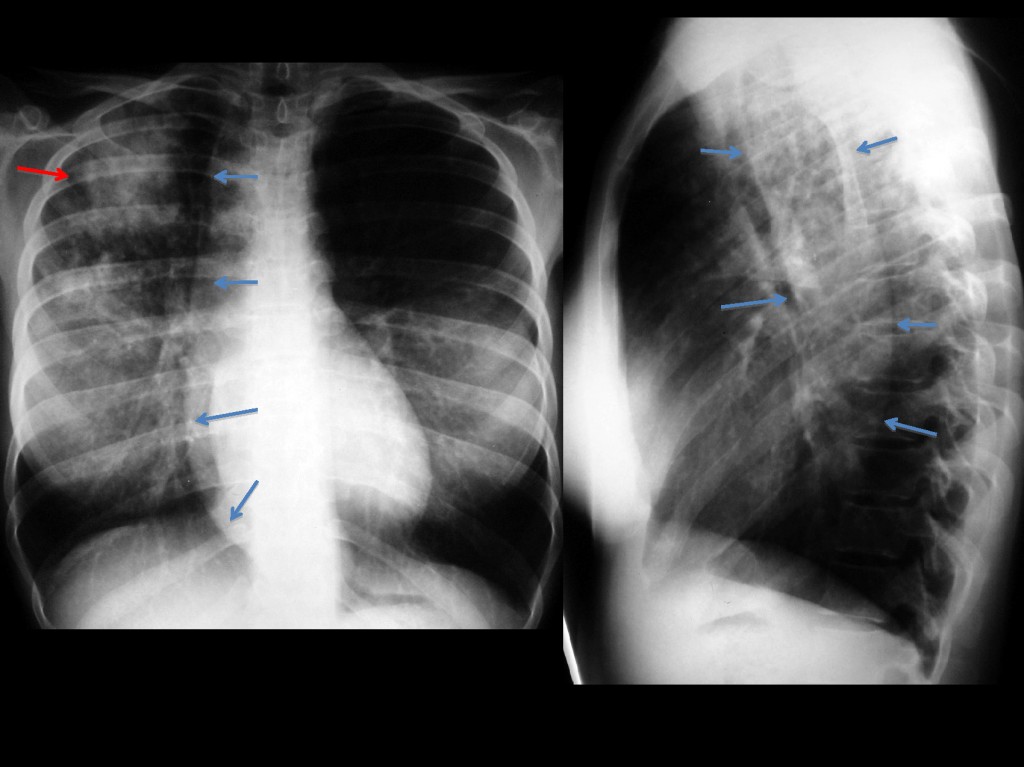
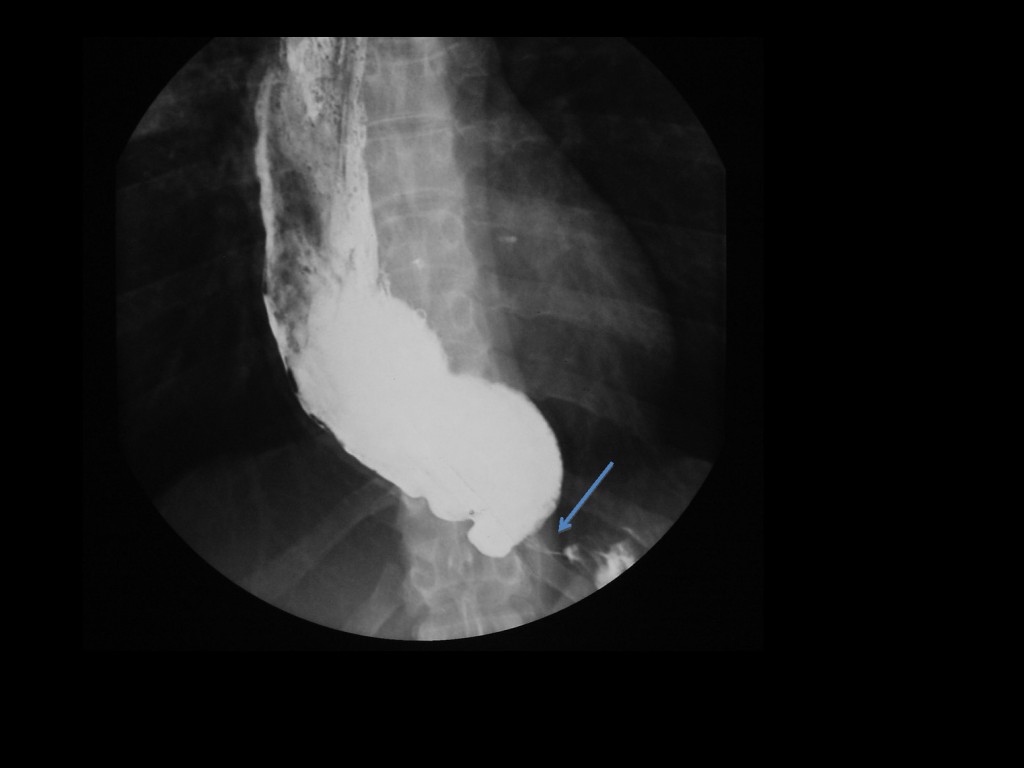
Teaching point: Remember that in small children and recumbent patients aspiration pneumonia goes to the right upper lobe.
Muppet insists: avoid satisfaction of search. Don’t be satisfied with initial findings. Keep looking. Not all infiltrates in upper lobes are due to tuberculosis!







aspiration pneumonia
Tuberculosis.
chronic infiltration in this pt is going in favour of tuberculosis.
Tuberculosis
2.aspiration pneumonia
It’s no 1:Tuberculosis
I think it may be tuberculosis.
aspiration pneumonitis as dilated esophagus noted[esophageal motility disorder-achalasia cardia]
Tuberculosis
Right hilium seems to be higuer than left hilium, so it seems that RUL has left volume.
I think there are some calcified nodes at the right hilium (maybe it is my imagination!!)These findings lead me to think about tuberculosis, but there are other findings such as wide right paratracheal line and double right heart contour that support achalasia diagnosis (dilatated esophagus, therefor aspiration pneumonia
megaoesophagus with aspiration pneumonitis
I would like to know the patient’s clinical findings and prior radiographs BUT as it looks now – with somewhat nodular infiltrates in the right upper lobe I would first think of tuberculosis.
For untreated lymphoma I would have liked to see more dense cnsolidations.
In a young woman, who I assume is mobile (she is not laying supine) I would not suspect aspiration in the right upper lobe.
-multiple airspace and nodular opacities in the right upper and midzones.
-prominent left paraesophageal line on PA view and anteriorly displaced trachea on the lateral view consistent with distended esophagus.
possibilitis are :
-distal esophageal obstruction (achalasia or any other cause) with aspiration pneumonitis.
-small esophgeal perforation with esophago-pulmonary fistula.
should be RIGHT paraesophageal line.
nodular infiltrates +brochiectasis in the rt upper lobe.
Tubercolosis
aspiration pneumonia
2.Aspiration pneumonia.
Achalasia (lateral view) thick tracheoesophageal line, increased density of retrotracheal space and forward convex posterior tracheal wall + RUL loose of volume(Did she have previous breast cancer and radiotherapy?).
aspiration pneumonia
Tuberculosis
Tuberculosis
Tuberculosis
aspiration pneumonia due to achalasia
Aspiration pneumonia
Tuberculosis
Tuberculosis
as the lesion is in the posterior segment of right upper lobe
#2.Aspiration pneumonia
maybe tuberculosis